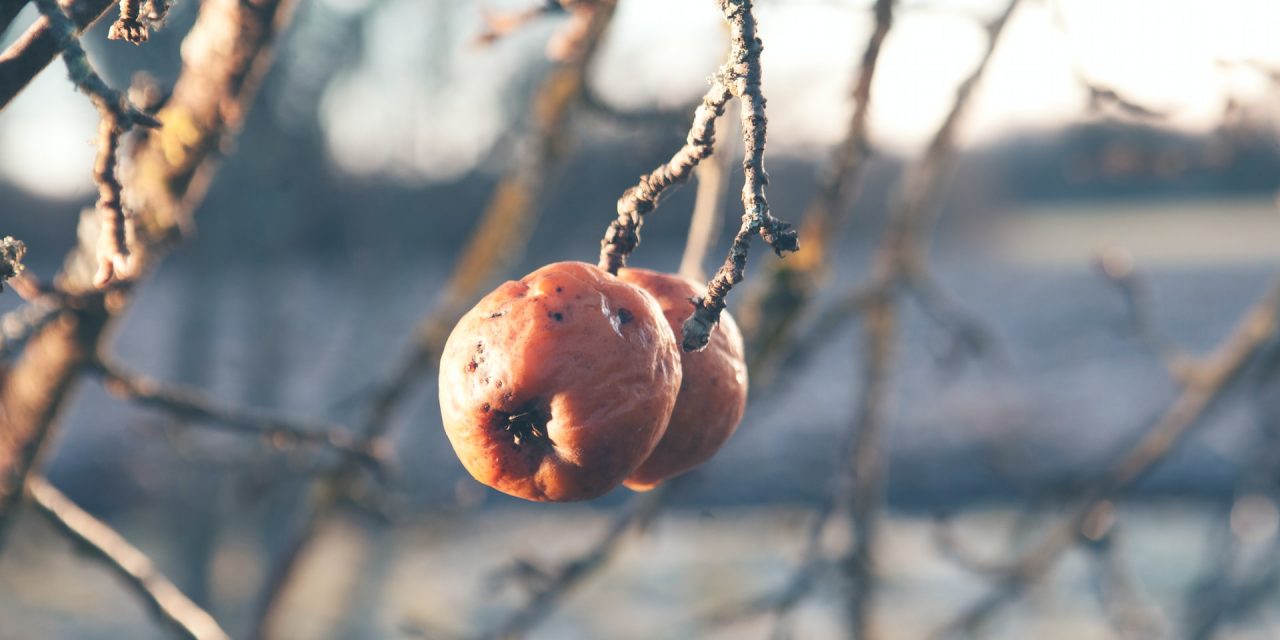Did you know that Persimmon seeds are known for being able to predict the weather? Persimmon trees are unique and are native to Oklahoma. They are considered useful to those who wish to reduce water runoff in areas (they have a long taproot), provide shelter and food for wildlife, attract and support pollinators or diversify their own food source. They are noted for being one of the last to put on their leaves in the spring and one of the first to lose them in the fall. Because of this, early in the season you will oftentimes find bare trees with few leaves but much fruit hanging.
If you would like to gather persimmons for a recipe that you’re itching to try, be sure to wait until after the first frost because the fruit tends to be extremely sour or even bitter when it is not ripe. As it ripens, it turns a golden hue—a beautiful orange color and begins to soften. I can promise, if you ever sample an unripen fruit you will never forget the mouth-puckering experience!
One of my favorite things about fall is our family tradition of the “Reading of the Seeds.” Each year, a few days prior to our Thanksgiving meal, I collect several persimmons and set them out on the cabinet to ensure that they get overripe and a little mushy. For most of my life, my grandma lived by Lake Tenkiller in Oklahoma, so it was always fun to take her for a walk at the edge of the lake and collect the persimmons.
If it was a year that fall had come early, the wind would be crisp, and we would collect the persimmons quickly. If it was a warm day we would linger and look at the colorful, fallen leaves and enjoy the water before filling our bucket. Now that she’s gone, I have found other trees near my home to collect from, but the tradition continues. After our family has devoured the big meal, I cut open the persimmons and remove the seeds. I wash and dry them and, with surgical precision, slice them in half to reveal the secret that’s buried inside.
The dark outer shell opens to reveal a creamy white center. Neatly tucked in the very middle is a tiny kernel that is shaped like a knife, a fork or a spoon. Much folklore surrounds these silverware-looking kernels. It is said that if you reveal a spoon-shaped kernel that you should expect lots of wet, snow to shovel. If you reveal a fork then you will have some snow, but it will be fluffy and light. Should you reveal a knife, then you better brace yourself for a bitter and icy-cold winter with cutting winds.
In all transparency, our record keeping shows that the seeds are only right about 25 percent of the time, but the whole process is fun and is one of our favorite fall traditions. In the world of horticulture and agriculture, weather is a key factor that must be considered. It’s extremely helpful when we have access to dependable information and forecasts, and when we don’t, we’re subject to wasting a lot of time, money and effort.
The same is true in our spiritual lives. Having a reliable source is critical. In our ever-changing, chaotic world, I am so thankful that one thing never changes, and that is our Heavenly Father. Heb. 13:8 tells us that, “Jesus Christ is the same yesterday and today, and forever.” He NEVER changes. You don’t have to collect fruit and look at the seeds and hope they are right. You don’t have to put your faith in some superstition or worldly tradition. Our God never changes, and that’s a promise!
As we enter the Thanksgiving season, let me encourage you to take time to look at the beautiful colors and appreciate all the details that this season offers. Eat through the seasons and try new things. Let’s examine our hearts and be truly thankful for our families and the fun memories that we’ve created with them. Most importantly, let us be thankful to God for His unchanging, ever-loving, dependability.





